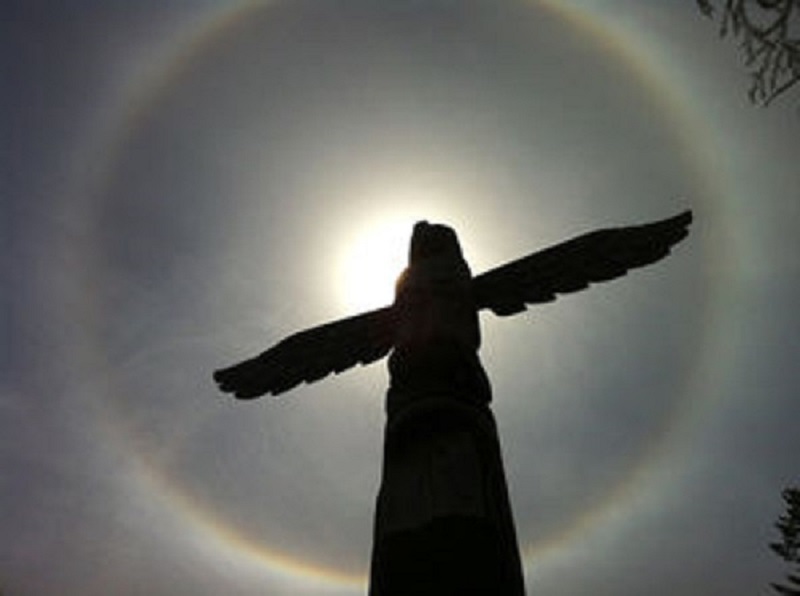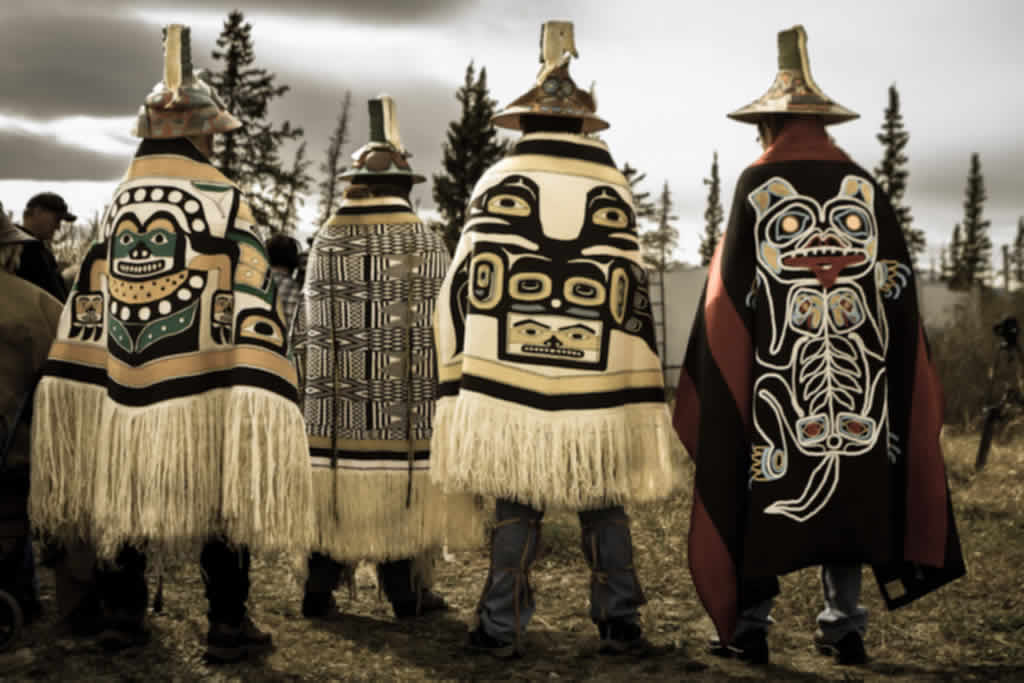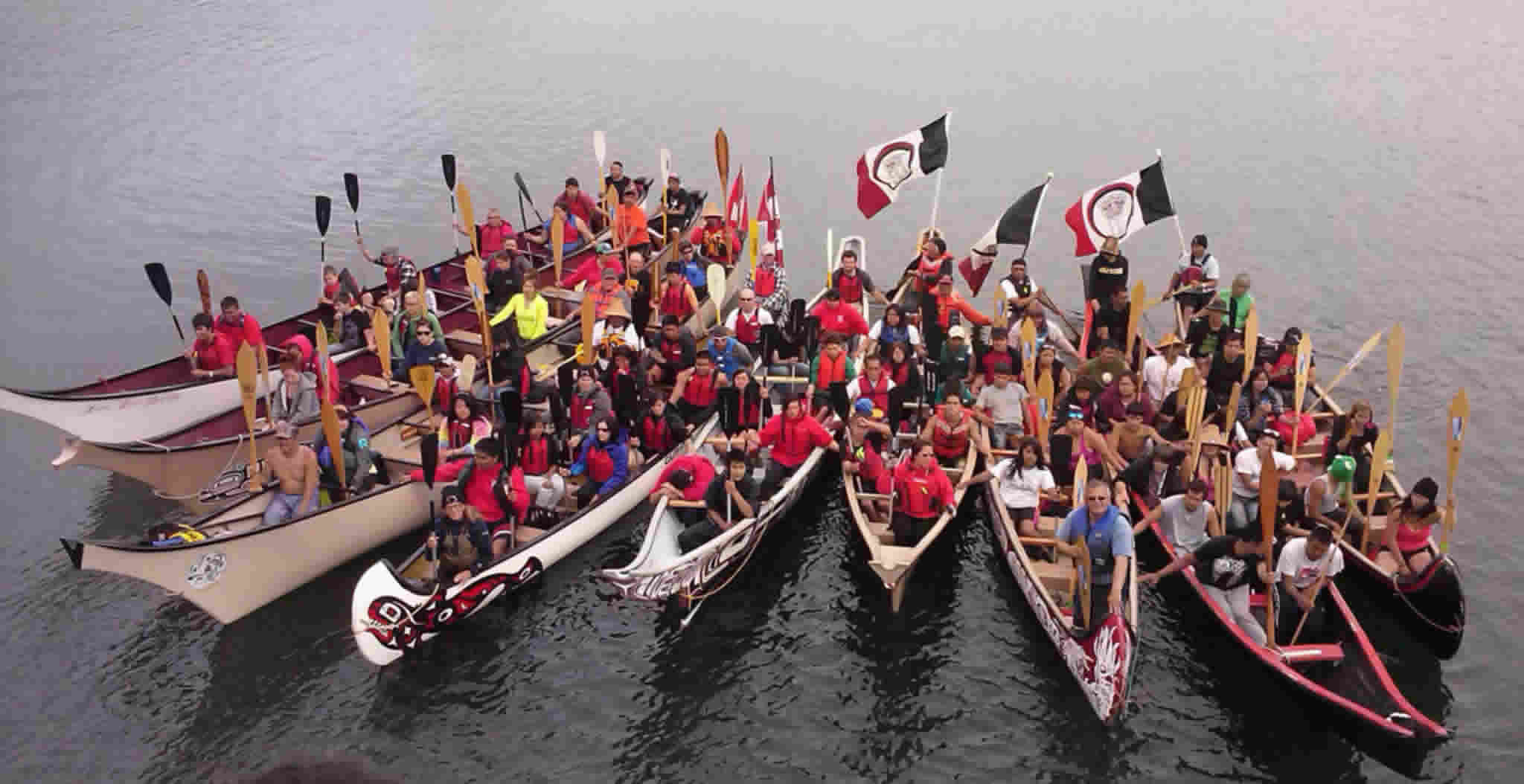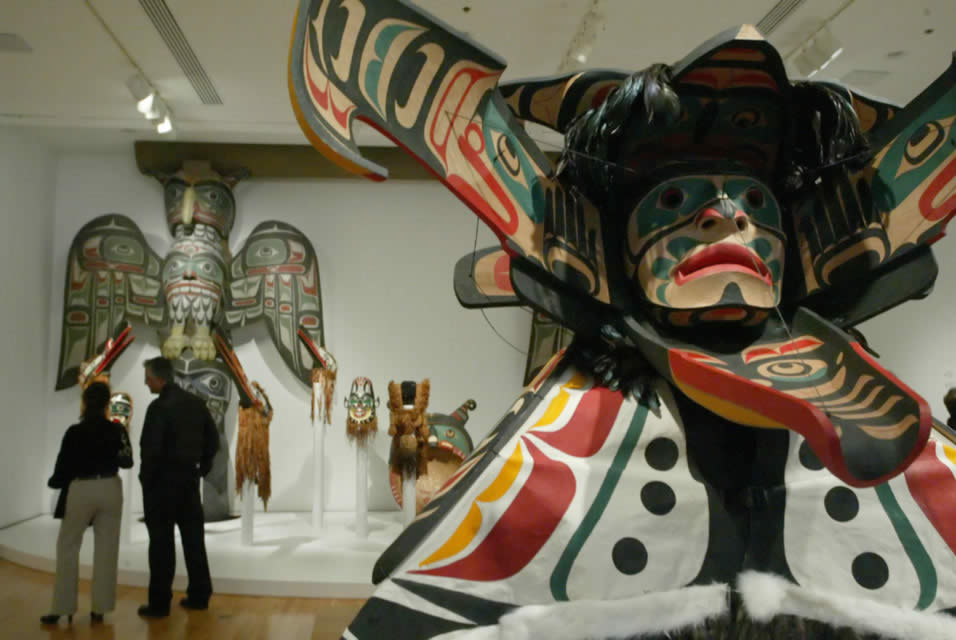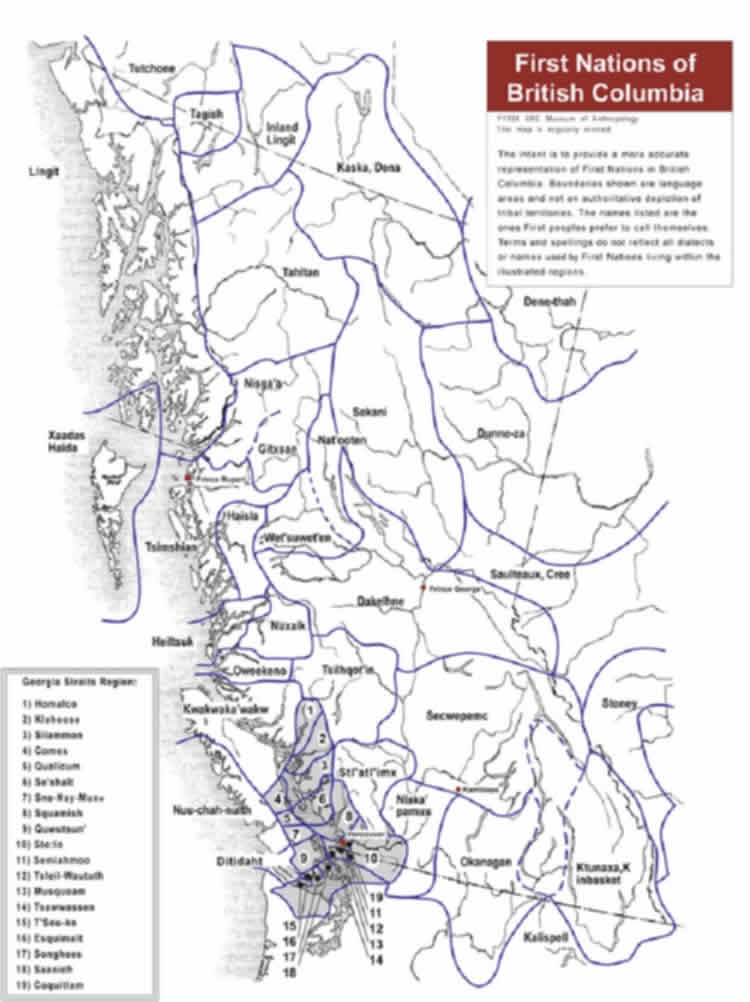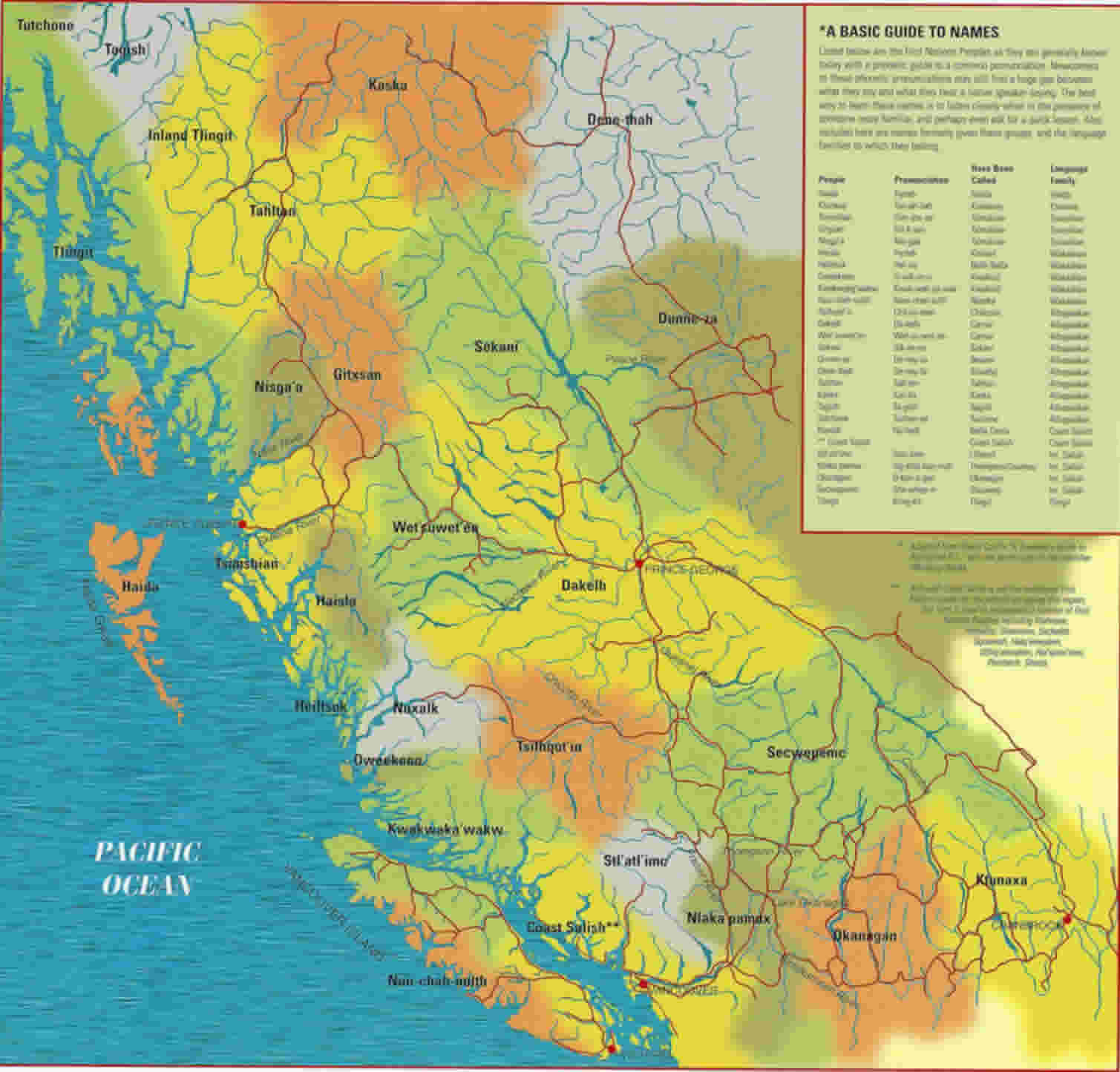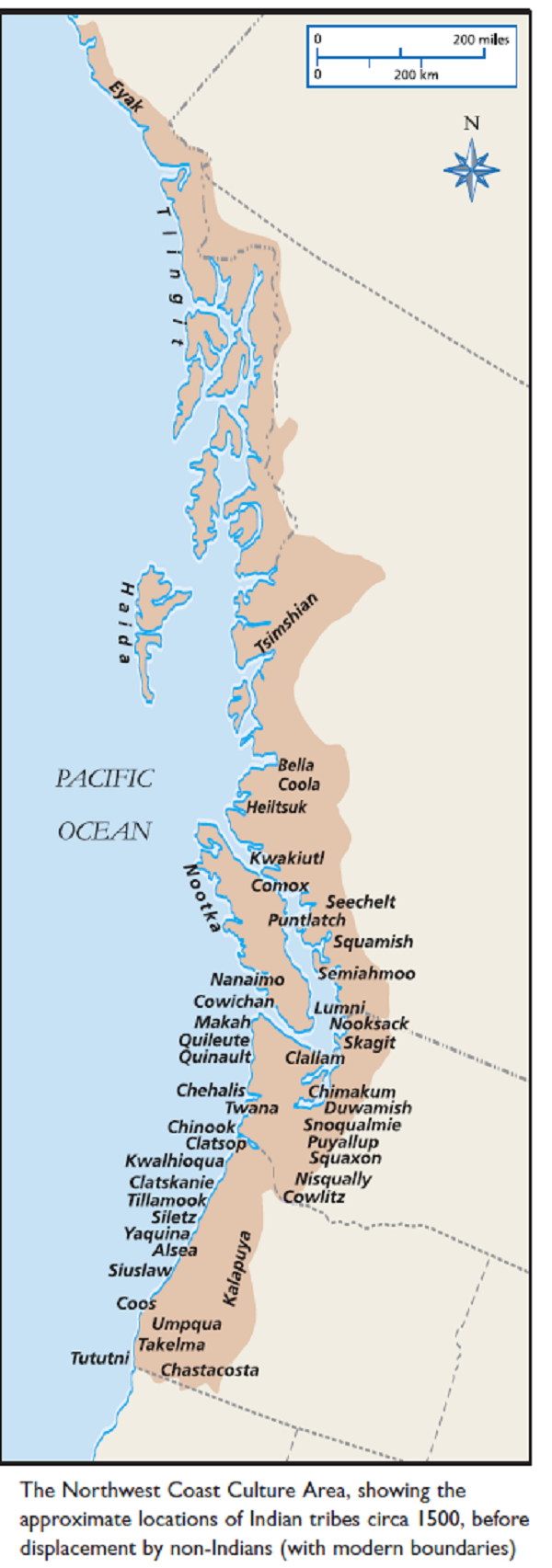
The Northwest Coast Cultural Region, a lengthy and slender area, extends approximately 2,000 miles from the north to the south and roughly 150 miles from east to west at its broadest section. It incorporates parts of southern Alaska, northern California, and the western portions of British Columbia, Washington, and Oregon. This region contains numerous islands, such as Vancouver Island, the Queen Charlotte Islands, and the Alexander Archipelago, as well as smaller chains.
These islands are the summits of submerged mountains that are part of the Coast Range, which runs from north to south along this region. Rugged mountains frequently form rocky cliffs that descend into the ocean, resulting in inlets, sounds, and straits along the coast. Further inland in Washington and Oregon, the Cascade Range shares a similar north-south orientation.
Despite its northern location, the Northwest Coast region enjoys a warm climate due to the influence of the Japan (Kuroshio) Current, which warms both the ocean and inland winds. However, westerly winds contribute significant moisture, leading to heavy rainfall obstructed by the mountains. This creates numerous springs and streams flowing from the mountains to the ocean.
As a result of these climatic conditions, extensive evergreen forests, home to some of the world's tallest trees, blanket most of the region, with the exception of steep mountains and rock faces. Tall trees form a dense canopy, leaving the forest floor dark and damp, with limited undergrowth apart from ferns and mosses. The people of the Northwest Coast typically resided near the ocean, with mountains to the east and island chains providing shelter from stormy seas to the west.
Indigenous peoples in this region constructed their ocean-facing houses using wood, primarily cedar, from the abundant forests. They built their homes with large timbers and hand-split planks, and used mats for insulation. Floors and roofs were also covered with planks, and a central firepit was typically included. The houses varied in size and could accommodate multiple families. They often displayed enormous totem poles outside their homes, with powerful shamans and secret society members interpreting the symbolism behind the faces on the poles. Expert woodworking in this area yielded large dugouts, carved chests, boxes, masks, and other items. The people also crafted exquisite baskets, textiles, and other goods, and exhibited their wealth and social standing through potlatches, a tradition unique to this region.
Due to the region's mountainous landscape, sea travel was common among the Northwest Coast Indians, who engaged in trade, slave-raiding, and hunting. They heavily depended on marine mammals, such as whales, seals, and sea lions, as well as various fish species. They also fished in rivers during salmon spawning and hunted land game, including deer, elk, bear, and mountain goat. Although they did not farm, the abundance of food allowed large populations to flourish in their coastal villages. Some peoples in the area cultivated tobacco.
The region boasts linguistic diversity, with language families such as Athapascan, Chimakuan, Chinookian, Kalapuyan, Kusan, Salishan, Wakashan, and Yakonan. Language isolates from the Na-Dene and Penutian phyla were also found, and the language groups were not geographically separated but intermixed. This made identifying tribal locations and linguistic connections difficult in the densely populated Northwest Coast Cultural Region.
